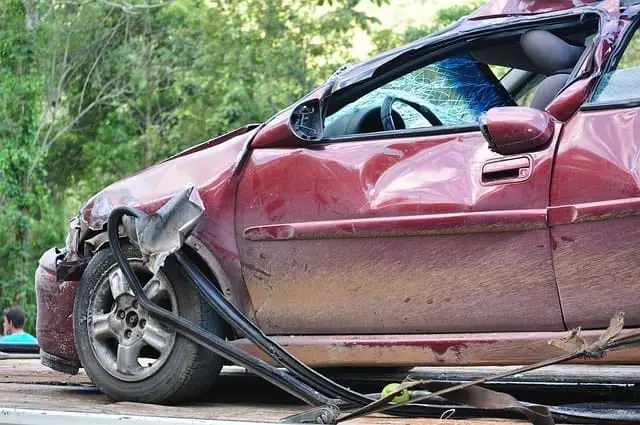Full Tort vs Full Coverage Insurance in PA: What’s the Difference?
Full tort and full coverage insurance are two distinct concepts in Pennsylvania’s auto insurance system. While it’s easy to confuse the two, a lack of clarity about your insurance coverage can lead to a rude awakening after a car accident. Understanding full tort vs. full coverage insurance in PA is crucial.
Pennsylvania’s choice no-fault car insurance system gives drivers important options that directly affect their rights to compensation following a collision. While full tort insurance preserves your legal rights to pursue all damages including pain and suffering, full coverage refers to a package of protections that may or may not include a full tort selection. Understanding these differences before purchasing a car insurance policy can save you from discovering limitations too late.
Pennsylvania Auto Insurance Options

Pennsylvania operates under a unique insurance framework that combines elements of both fault and no-fault systems. Unlike traditional no-fault states, Pennsylvania offers drivers a choice in how their insurance will function after an accident. This “choice no-fault” system requires drivers to make important decisions about their coverage that can have far-reaching consequences.
When purchasing auto insurance in Pennsylvania, you must select either full tort or limited tort. This choice determines your right to seek compensation for non-economic damages such as pain and suffering. While full tort protection preserves all your legal rights to pursue compensation, limited tort restricts these rights in exchange for slightly lower premiums.
Pennsylvania’s minimum insurance requirements include $15,000 per person and $30,000 per accident for bodily injury liability, along with $5,000 for property damage liability. The state also mandates $5,000 in medical benefits coverage regardless of fault.
Your tort option creates a lasting impact on potential compensation after an accident. The choice between full and limited tort can mean the difference between thousands or even hundreds of thousands of dollars in available compensation, particularly for serious injuries that affect your quality of life but don’t meet the “serious injury” threshold needed to overcome limited tort restrictions.
Full Tort Insurance: Protection for Pennsylvania Drivers
Full tort coverage isn’t actually a type of insurance coverage but rather an election that preserves your legal rights after an accident. When you choose the full tort option, you maintain your complete ability to seek compensation for all damages you suffer, including non-economic damages like pain and suffering, emotional distress, and loss of life’s pleasures.
With full tort protection, you have unrestricted access to the court system to pursue fair compensation for any injury, regardless of its severity. This means even moderate injuries that cause ongoing discomfort but don’t rise to the level of “serious impairment” remain fully compensable under your policy.
The cost difference between full tort and limited tort options typically ranges from 15-20% of your total premium. For the average Pennsylvania driver, this equals approximately $200-300 annually—less than a dollar per day for complete legal protection.
This small investment can yield significant returns if you’re involved in an accident. Insurance settlements for identical injuries can differ by tens of thousands of dollars based solely on whether the injured person selected full or limited tort. The math becomes clear when you consider that giving up your rights to save $20 monthly could cost you $50,000 or more in unavailable compensation after a collision.
What Is Limited Tort Coverage?
Limited tort coverage significantly restricts your legal rights following a car accident. By selecting this option, you forfeit the ability to recover non-economic damages except in specific circumstances. This means compensation for pain and suffering, emotional distress, and diminished quality of life becomes unavailable in most cases.
This election effectively removes their liability for non-economic damages in most cases, substantially reducing their payout obligations while only modestly decreasing premiums. This arrangement strongly favors insurance companies while placing consumers at a significant disadvantage if they experience an injury.
What Full Coverage Auto Insurance Actually Includes
The term “full coverage” can be misleading as it doesn’t represent a specific type of insurance but rather a combination of coverages. Typically, “full coverage” refers to a policy that includes liability (bodily injury and property damage), collision (for damage to your vehicle in an accident), and comprehensive coverage (for non-collision damage like theft, vandalism, or weather events).
These three components work together to provide protection in various scenarios.
Liability Coverage
Liability coverage addresses your responsibility for others’ injuries or property damage—this is a mandatory component of auto insurance in most states and protects you financially if you cause an accident that results in bodily injury or property damage to others. It typically includes:
- Bodily Injury Liability: Covers medical expenses, lost wages, and legal costs if you are responsible for an accident that injures another person.
- Property Damage Liability: Pays for damages you cause to another person’s vehicle, home, or other property.
Your liability coverage does not cover your own medical expenses or vehicle repairs. It is designed to protect others from financial loss due to your actions behind the wheel.
Collision coverage
Collision coverage helps pay for repairs to your own vehicle if you are involved in an accident, regardless of who is at fault. This coverage applies in various scenarios, including:
- Collisions with other vehicles
- Accidents involving stationary objects (such as trees, poles, or guardrails)
- Single-car accidents, such as rollovers
Comprehensive coverage
Comprehensive coverage protects your vehicle from damages that are not related to collisions. This includes a range of events, such as:
- Theft: If your car is stolen, comprehensive insurance helps cover the loss.
- Vandalism: Damage from acts of vandalism, such as keying or broken windows, is covered.
- Weather Events: Damage caused by natural disasters, hail, flooding, or falling objects (like tree branches) is included.
- Animal Collisions: If you hit a deer or other animal, comprehensive coverage pays for the damages.
Comprehensive coverage provides financial security for unexpected, non-accident-related damages that could otherwise lead to costly repairs or vehicle replacement.
Additional types of automobile insurance coverage
It’s important to note that “full coverage” doesn’t necessarily include uninsured/underinsured motorist coverage, which protects you if the at-fault driver has insufficient or no insurance. It also doesn’t automatically include coverage for medical bills beyond the state minimum or lost wages for missed work due to a car accident.
Maximizing Your Compensation After a Pennsylvania Auto Accident

After an accident, taking immediate steps can significantly impact your claim’s success. Begin by seeking medical attention, even for seemingly minor injuries. Document everything thoroughly—take photos of vehicles, injuries, and the accident scene. Collect contact information from witnesses and the other driver’s insurance details.
Maintain detailed records of all accident-related expenses, including medical bills, repair costs, and income lost due to missed work. Keep a journal documenting your pain levels, treatment progress, and how injuries affect your daily activities. This documentation forms the foundation of your compensation claim.
Don’t settle your claim until you’ve reached maximum medical improvement or understand your long-term prognosis. Early settlements often fail to account for ongoing medical needs and future complications.
The insurance claim process is designed to minimize payouts rather than ensure fair compensation. Contact Munley Law today for a free consultation to understand your rights and your insurance policy and ensure you receive the full compensation you deserve under Pennsylvania law.
Posted in Car Accidents.









